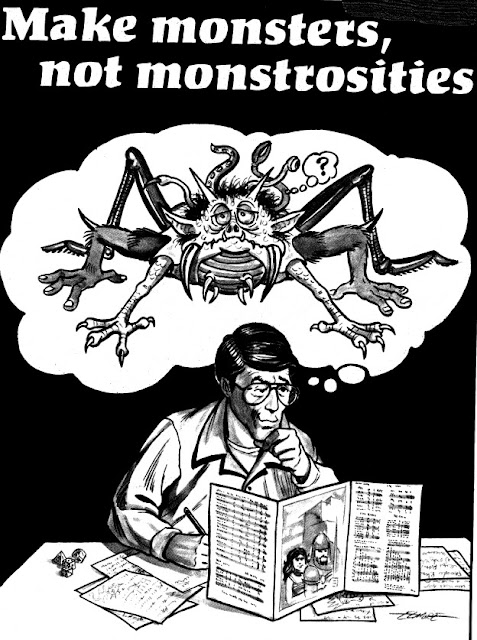Larry Elmore joined TSR as a staff artist in late 1981, after which his artwork became a staple of the company's many products, from Dungeons & Dragons to Gamma World and Star Frontiers, among many, many others. My own earliest memories of Elmore's distinctive style are from the pages of Dragon, such as this piece, which appeared in issue #59 (March 1982).
I'm fond of this piece for its humor, a trait I generally associate with the work of the late Jim Holloway. I also have a weird fascination with illustrations that depict ordinary people playing or thinking about roleplaying games, so this one scratches that itch. Take note, too, of Elmore's rendition of Dave Trampier's iconic artwork from the Dungeon Master's Screen, which I think adds to the charm of the whole thing.


Funny!
ReplyDeleteI started playing AD&D in late 80`s (in Finland) and though our group certainly appreciated the works of Trampier and Otus and company, our favourite always was Elmore. I guess he was realistic in a right way.
JC
P.S. I`ve been reading your blog for years and I love it. Though I`m some years younger than you and started playing with BECMI and then dungeonmastering (is that a verb?)AD&D, there are many things that seem familiar to me, like possible critical hits (I guess it was inevitable idea somehow?) or Gary Gygax as the final arbiter of rules...
Keep up the good work!
I always liked the fact that the critter itself seems to be questioning its own existence.
ReplyDeleteIt looks like someone has been rolling up monsters for Carcosa.
ReplyDeleteNothing 'weird' at all about that fascination...
ReplyDeleteAh, the early days of Larry E.
ReplyDeleteFor the first time I decided to take a look at Grognardia's original blog posts from 2008 and found the first one on D&D art. The art topics are what first drew me to this blog, and I recall the hard edge Grognardia saved for D&D's new oil painters (Elmore, Easley, etc.) that replaced the more amateurish art from OD&D (Sutherland, Trampier, etc). I didn't agree much with Grognardia at the time. BECMI allowed me to play D&D, and Larry Elmore's covers defined the game for me. However, reading this bit below which I copied from Grognardia's post in April 2008 has changed my mind.
"I don't think early D&D art is better, either technically or esthetically, than more modern treatments of the same subject matter (though I am very fond of certain older pieces). In almost every way, I think modern gaming art is superior to its predecessors. The sole exception is in its implication. This is a subtle and subjective thing but, for me, early gaming art, in its diversity, with its rough around the edges rawness, is far more evocative of what I want roleplaying to be -- an amateur activity -- and better highlights that it is an intensely personal thing that varies greatly from gamer to gamer. Frankly, I don't want slick; I don't want polished. Roleplaying games grew out of the confluence of multiple kit-bashes to wargaming in the late 60s and early 70s and it's that gung-ho do-it-yourself enthusiasm that I see in early D&D art."